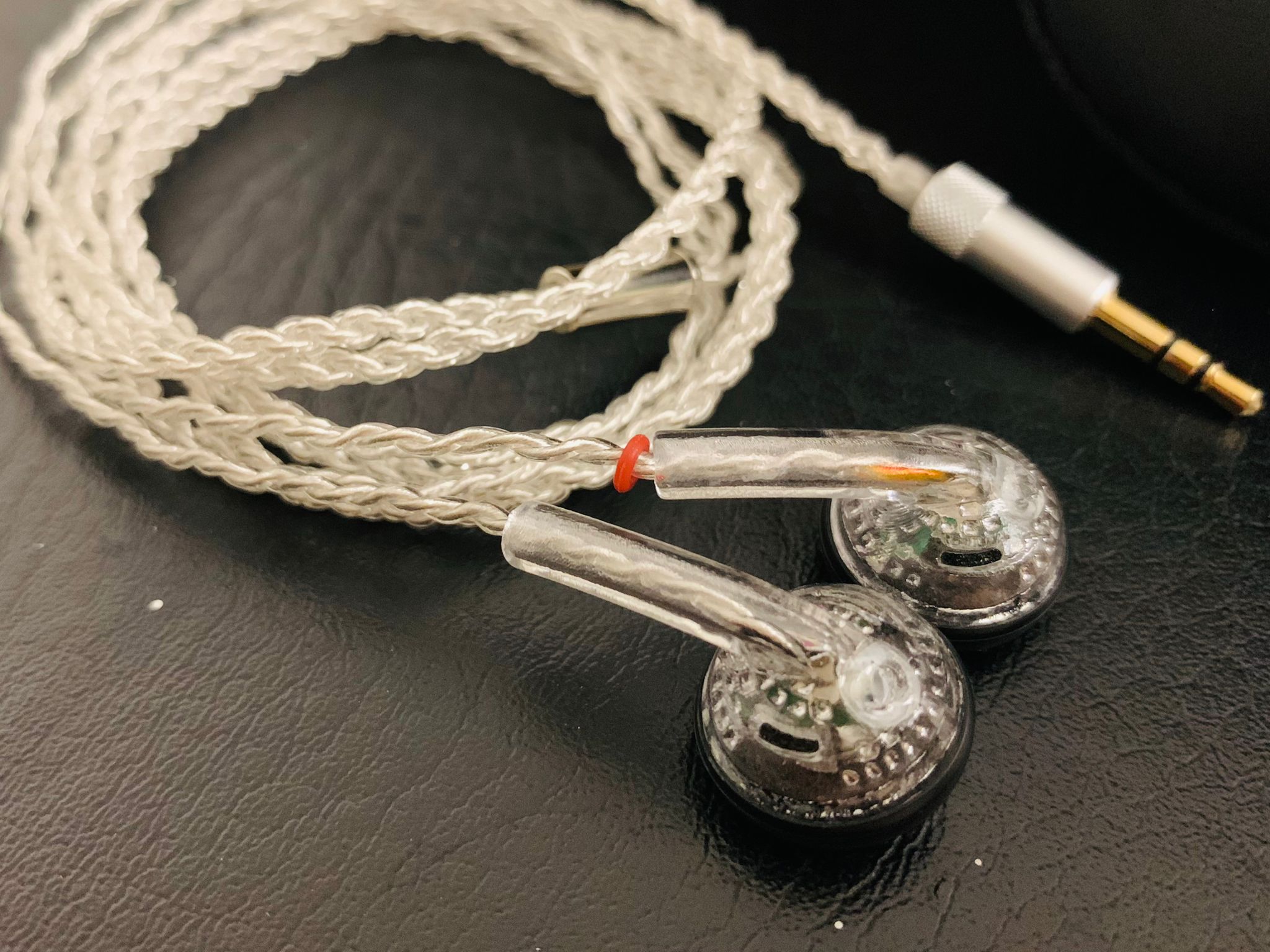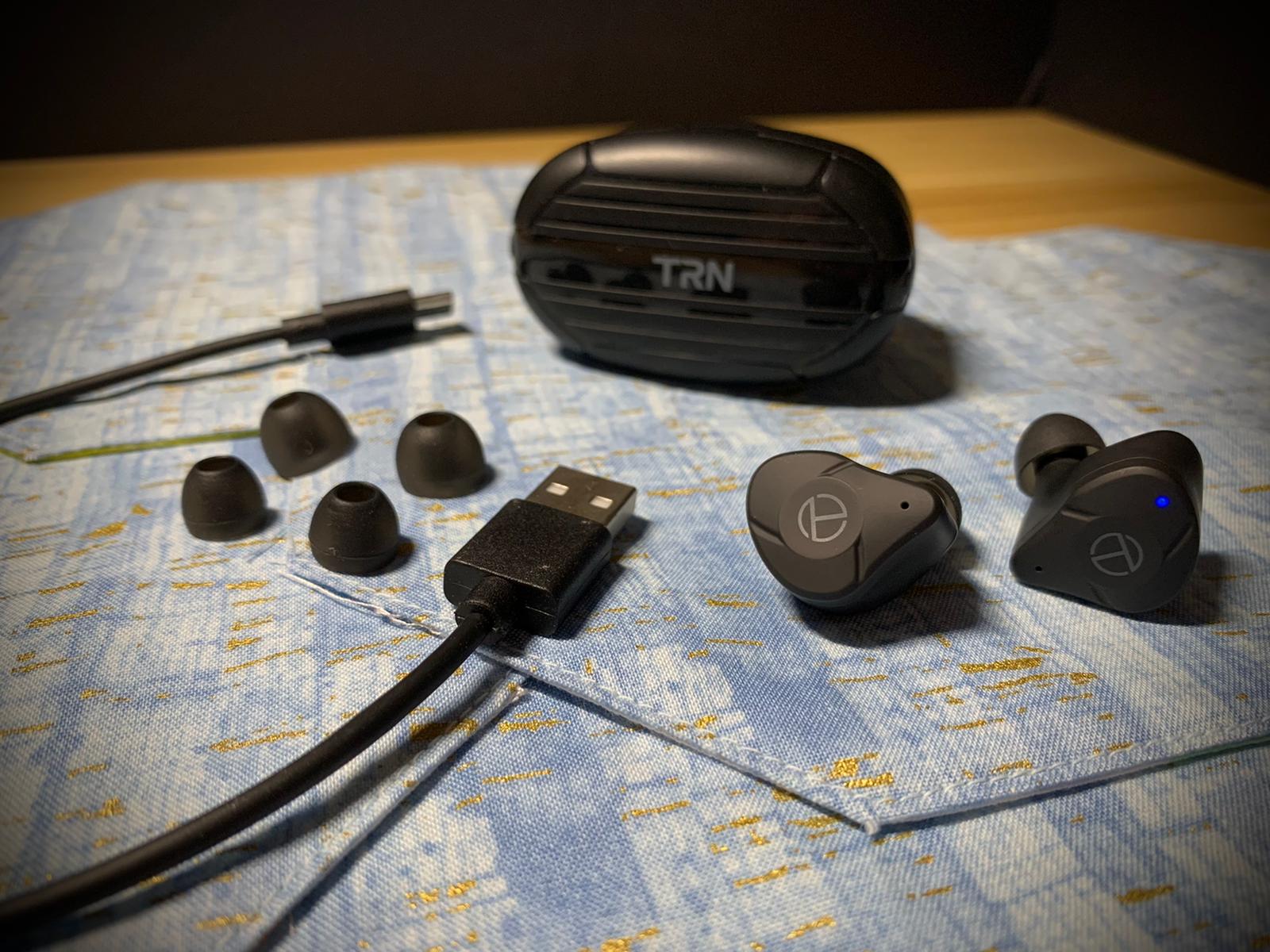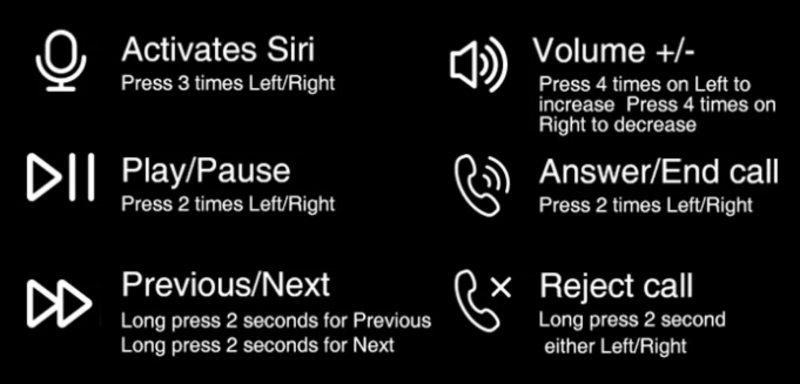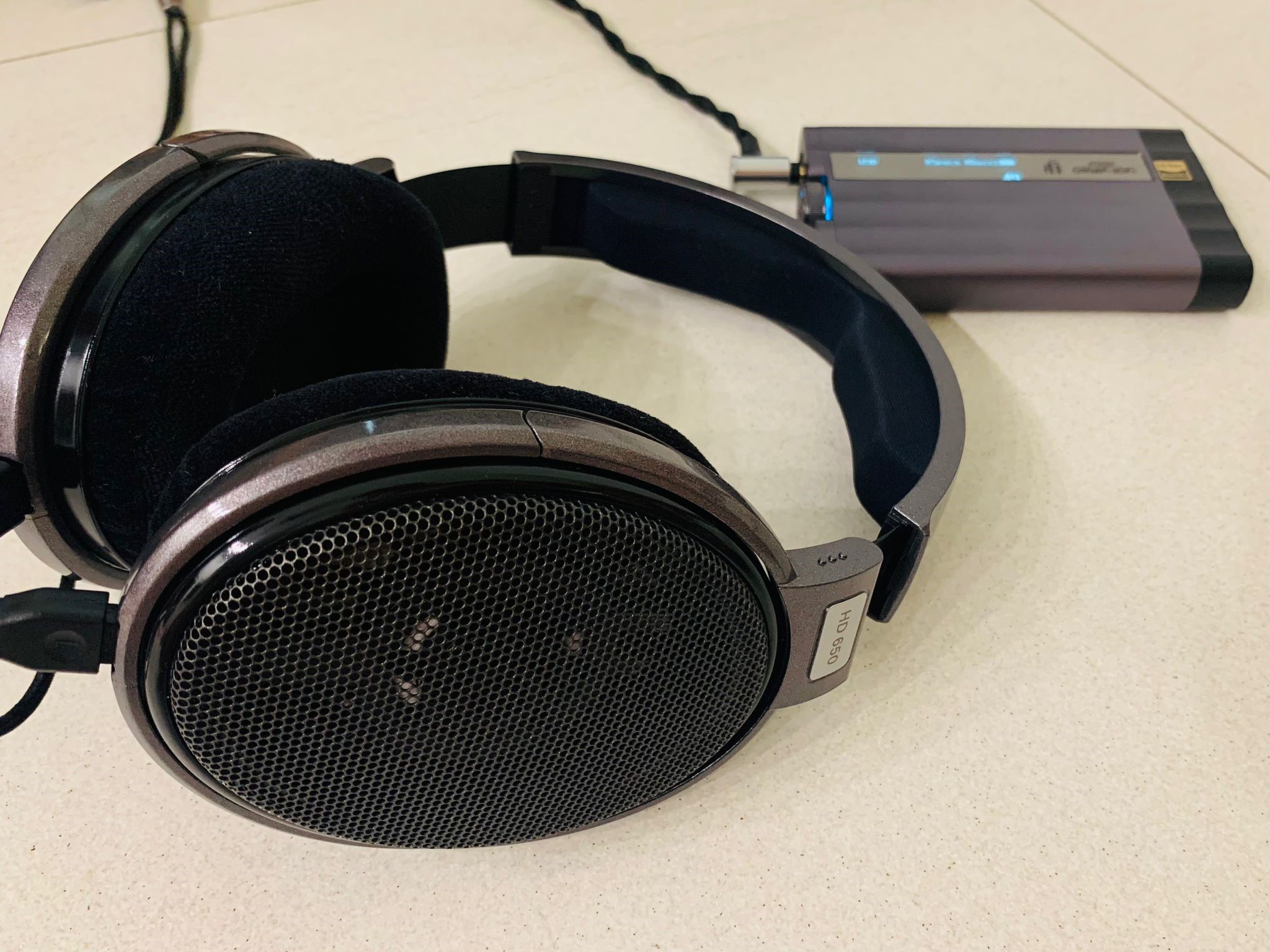DISCLAIMER
I bought the FA19 at a discounted price from Aliexpress.
It can be gotten here: https://www.aliexpress.com/item/1005006889859626.html (no affiliate links).

SPECIFICATIONS
ACCESSORIES
Other than the IEM, these are included:
- 2 pairs of foam eartips (M)
- 2 pairs of double flange silicone eartips (M)
- 3 pairs of bass silicone eartips (S/M/L/)
- 3 pairs of balanced silicone eartips (S/M/L)
- 3 pairs vocal silicone eartips (S/M/L)
- 3 pairs of Spinfit silicone eartips (S/M/L)
- 3 pairs of HS18 silicone eartips (S/M/L)
- Plastic case for eartips
- HB5 Carrying case
- Cable
- 2 modular terminals for 3.5 mm and 4.4 mm modules
- MMCX release tool
- Magnetic clasp
- Cleaning brush with pin to flick tuning switches

The accessories are truly fit for a king, and this is one of the best accessory line-up I've encountered in my audio journey.
We are literally spoiled for choice with the wide array of eartips; these even come in a little plastic case.

The dual flange tips provide the best isolation, though comfort may be an issue because of the deep insertion. The Spinfit tips are rather neutralish - they have excellent comfort and fit - without coloring the sonics too much. The HS18 tips bestow a warm neutral tonality, with solid fit and seal.
The other 3 silicone tips perform their functions as per their namesake:
- "Vocal" tips - boosts upper frequencies.
- "Bass" tips - boosts lower frequencies.
- "Balanced" tips - mid-point between the above 2 tips.
For foam lovers, fear not, there are 2 pairs of foam tips included. These improve isolation, though with some soundstage compression and treble dip.
Eartips play a major part in sonics, comfort, seal and isolation, so do explore and tip-roll to see what suits your requirements.

The stock cable is a silver cable braided in an 8-stranded Litz configuration. This is sheathed with TPU, which should prevent yellowing and hardening. This is definitely one of the better stock cables, with good heft and robust braiding. It does not tangle much, and has minimal microphonics. There's a chin cinch for added grip.
A plus point for this cable, is its modular plugs, with distal terminals for 4.4 mm (balanced) and 3.5 mm (single-ended plugs). Thus, this increases the FA19's compatibility with various sources.
The MMCX removal tool is a useful addition for safe removal of the MMCX cable, and we have a magnetic clasp to tidy up the cable. Also included is a cleaning brush plus switch pin, for toggling the switches on this tunable IEM.

Last but not least, we have a large semi-rigid case, which has compartments and a velvety material internally to cushion the contents.
The rest of this review was done with the stock cable and stock spinfit silicone tips. No aftermarket accessories were used, so as not to add any confounders to the sound.
BUILD/COMFORT

The FA19 is fashioned from resin via DLP 3D-printing technology, with an ultra-tight precision of up to 0.0375 mm. The shells are beautiful yet solidly built. Other than the faceplate, the rest of the shells are transparent, which allow users to visualize the drivers in all their glory.
Weighing in a 7 g apiece, the earpieces are very light. Ergonomics are top-notch too, with a concha protrusion for added stability, yet without any poking edges on the inner aspects to cause discomfort. In fact, I've used the FA19 for marathon listening sessions without any discomfort whatsoever.
Unlike most IEMs which use 2-pin connectors, the FA19 utilizes MMCX, which allows the housings to swivel slightly - this improves fitting and positioning of the IEM in the ears. MMCX does have a bad rep in budget CHIFI due to wearing out after multiple cable swaps, but MMCX come in a variety of grades, from cheap and less robust ones, to higher quality types. The MMCX in the FA19 seem to be of the latter types - they snap on and off with ease, and aren't too tight or too lose - I've swapped them at least 30 times during my testing without any issues.

Contrary to most all-BA IEMs, the FA19 is vented in the sub-woofers, so the FA19's isolation is bang average, and loses out to some unvented BA types in this department. Indeed, I tried bringing the FA19 for a stage monitoring gig, but unfortunately it didn't isolate that well, with bass losses noted in noisy environments.
On the flip side, the vents bring a wealth of benefits:
TUNING NOZZLES/INTERNALS

The FA19 packs 10 choice Knowles BA drivers in its frame, in the following setup:
As alluded to, the bass BAs have a vented sub-woofer via a negative feedback system to boost bass. This IEM also has a creatively designed extended acoustic tube - Fiio patents this as the S Turbo concept - which deliberately lengthens the tubes so as to dissipate treble, and hence retain bass. Indeed, BA bass is the usual pitfall found in all-BA sets, but as we will read in the following sections, the FA19's bass sounds extremely close to a DD bass, in terms of movement of air and decay.

Graph of the Fiio FA19 via IEC711 coupler. 8 kHz is a coupler artefact peak.
The FA19 in stock form, has a "monitor" mode - see the red graph above. This furnishes a warm neutral signature that is very agreeable to the ears. This tuning is very reference-like and sounds mature.
Toggling the bass boost switch - the black graph above - pumps up the bass, thus bringing some fun to the equation.
DRIVABILITY
I tested the Fiio FA19 with the following sources:
- Apple dongle
- Cayin RU7
- Chord Mojo 2
- Fiio KA11 dongle
- Fiio KA17 dongle
- Khadas Tone Board -> Schiit Asgard 3 amp
- Questyle M15 DAC/AMP dongle
- Sony Walkman NW A-55 DAP (Walkman One WM1Z Plus v2 Mod)
- Sony Walkman NW A-55 DAP (Walkman One Neutral Mod)
- Sony Walkman NW WM1A DAP (Walkman One WM1Z Plus v2 Mod)
- Smartphone
This IEM is easily driven, and additional amplification is not essential.
However, take note that it has a low 10 Ω impedance, which in practice, due to the rule of eights, means that sources with an output impedance of > 1.25 Ω may change the frequency response of this IEM. Thus, source pairing is potentially tricky for audiophiles that use higher impedance gear.
SOUND & TECHNICALITIES
The following impressions were done with the bass boost switch turned off - ie stock form with the red graph. This confers a warm neutral tonality as described above.

With the vented bass BA, the FA19 has good sub-bass extension, and the bass sounds similar to a regular DD bass. It isn't exactly 100% identical though, as there's just a slight lack of decay in the final tail of bass notes, but this improves on the vast majority of unvented BA bass drivers that sound unnatural in terms of movement of air and decay. Bass is textured, speedy and clean, with no bleed.
For folks that want a bigger bass, just hit the bass boost switch. This makes the FA19 warmer than the stock tuning, with a more impactful mid-bass and deeper sub-bass extension.
The lower midrange is a tinge depressed, but is very transparent due to no bass impingement. This allows instruments and vocals to be nicely palleted against a dark background. Upper mids hit only a 6 dB ear gain, which translates to forward vocals without shoutiness; this will be much appreciated by the anti-pinna gain gang.
The FA19 has a smooth treble, with good extension. Sibilance is kept to a minimal. Despite not being overly zealous in the treble, it is still very resolving to allow micro-details and fine nuances in the music to be captured.
The FA19 is a technicalities beast. It boasts of a massive soundstage that goes beyond the ears, with pinpoint imaging and remarkable layering. And this is without needing to resort to a steroid boosted treble to garner "fake clarity", a cardinal sin committed in some other CHIFI gear.
BA timbre is minimal compared to some other all-BA rivals. Note weight is just right on stock tuning.
COMPARISONS

The FA19 will be compared against other pure BA IEMs. Hybrids, planars and single DDs are left out of the comparisons, as the different transducer types have their own pros and cons.
The bass boost switch is turned off for these comparisons.
Sony IER M9

Graph of the Fiio FA19 versus Sony M9 via IEC711 coupler. 8 kHz is a coupler artefact peak.
The M9 has less bass, and the bass sounds quite BA-like, with a lack of decay and sub-bass extension. The M9 also has less treble, and sounds darker.
The M9 has a weaker soundstage and poorer micro-detailing, but has a hair better imaging. The M9 has a thicker note weight.
The M9 is harder to drive. The M9 has better isolation, but due to the pressure suction in the ears, some users complain of discomfort using it.
EPZ 530

Graph of the Fiio FA19 versus EPZ 530 via IEC711 coupler. 8 kHz is a coupler artefact peak.
The EPZ 530 is a bright V-shaped set, with more upper mids and treble than the FA19. Thus, the EPZ 530 sounds more aggressive and harsh, with sibilance in more abudance.
The EPZ 530 has a more prominent metallic BA timbre, with a truncated BA bass that lacks natural decay.
In technical aspects, the EPZ 530 loses in soundstage and imaging, with micro-detailing about on par.
CONCLUSIONS

The Fiio FA19 is a competitive all-BA set that belongs in the TOTL conversation. In stock tuning, it has a pleasant warm neutral signature, adeptly balancing musicality and technical prowess. Flicking the bass boost switch thickens the bass, adding some excitement to the soundscape, so it isn't a one trick pony.
The ace up its sleeve is a vented sub-woofer labyrinthine acoustic tube, which allows the FA19 to sound very close to a DD bass in terms of air movement and decay. The vented design also assists with a huge soundstage and relief of pressure in the ears, though isolation loses out to other all-BA sets which are unvented.
The rest of the tonality is also appealing, with the midrange clean as a whistle, coupled with a resolving yet sibilant-free treble. Technicalities are a highlight, in particular soundstage and imaging.
In non-sonic aspects, the FA19's packaging is one of the best in the business, with all that an audiophile would require accounted for. The modular cable promises compatibility with both single-ended and balanced sources. Build quality and ergonomics are second to none. For detractors of MMCX connectors, the FA19 comes with this connector type, but thankfully the quality seems solid, with easy removal and connectability.

While the FA19 is easily driven, with no requirements for amplification, the low impedance of 10 ohms may be potentially problematic when used with high impedance sources.
In conclusion, the FA19 is a solid all-BA set. It keeps the stellar properties of an all-BA IEM - such as the technical performance and nimble bass - yet also acing some areas that other all-BA gear fail to achieve, such as bass naturalness and pressure relief. This IEM has my heartfelt recommendation, and would be a great option for folks searching for a TOTL model that does most departments well.
I bought the FA19 at a discounted price from Aliexpress.
It can be gotten here: https://www.aliexpress.com/item/1005006889859626.html (no affiliate links).

SPECIFICATIONS
- Driver configuration: 10 x Knowles balanced armature drivers
- Frequency response: 20 Hz - 40 kHz
- Impedance: 10 Ω
- Sensitivity: 106 dB/mW
- Cable: MMCX; silver cable 8 stranded Litz; modules for 3.5 mm and 4.4 mm terminals
- Tested at: $999.99 USD
ACCESSORIES
Other than the IEM, these are included:
- 2 pairs of foam eartips (M)
- 2 pairs of double flange silicone eartips (M)
- 3 pairs of bass silicone eartips (S/M/L/)
- 3 pairs of balanced silicone eartips (S/M/L)
- 3 pairs vocal silicone eartips (S/M/L)
- 3 pairs of Spinfit silicone eartips (S/M/L)
- 3 pairs of HS18 silicone eartips (S/M/L)
- Plastic case for eartips
- HB5 Carrying case
- Cable
- 2 modular terminals for 3.5 mm and 4.4 mm modules
- MMCX release tool
- Magnetic clasp
- Cleaning brush with pin to flick tuning switches

The accessories are truly fit for a king, and this is one of the best accessory line-up I've encountered in my audio journey.
We are literally spoiled for choice with the wide array of eartips; these even come in a little plastic case.

The dual flange tips provide the best isolation, though comfort may be an issue because of the deep insertion. The Spinfit tips are rather neutralish - they have excellent comfort and fit - without coloring the sonics too much. The HS18 tips bestow a warm neutral tonality, with solid fit and seal.
The other 3 silicone tips perform their functions as per their namesake:
- "Vocal" tips - boosts upper frequencies.
- "Bass" tips - boosts lower frequencies.
- "Balanced" tips - mid-point between the above 2 tips.
For foam lovers, fear not, there are 2 pairs of foam tips included. These improve isolation, though with some soundstage compression and treble dip.
Eartips play a major part in sonics, comfort, seal and isolation, so do explore and tip-roll to see what suits your requirements.

The stock cable is a silver cable braided in an 8-stranded Litz configuration. This is sheathed with TPU, which should prevent yellowing and hardening. This is definitely one of the better stock cables, with good heft and robust braiding. It does not tangle much, and has minimal microphonics. There's a chin cinch for added grip.
A plus point for this cable, is its modular plugs, with distal terminals for 4.4 mm (balanced) and 3.5 mm (single-ended plugs). Thus, this increases the FA19's compatibility with various sources.
The MMCX removal tool is a useful addition for safe removal of the MMCX cable, and we have a magnetic clasp to tidy up the cable. Also included is a cleaning brush plus switch pin, for toggling the switches on this tunable IEM.

Last but not least, we have a large semi-rigid case, which has compartments and a velvety material internally to cushion the contents.
The rest of this review was done with the stock cable and stock spinfit silicone tips. No aftermarket accessories were used, so as not to add any confounders to the sound.
BUILD/COMFORT

The FA19 is fashioned from resin via DLP 3D-printing technology, with an ultra-tight precision of up to 0.0375 mm. The shells are beautiful yet solidly built. Other than the faceplate, the rest of the shells are transparent, which allow users to visualize the drivers in all their glory.
Weighing in a 7 g apiece, the earpieces are very light. Ergonomics are top-notch too, with a concha protrusion for added stability, yet without any poking edges on the inner aspects to cause discomfort. In fact, I've used the FA19 for marathon listening sessions without any discomfort whatsoever.
Unlike most IEMs which use 2-pin connectors, the FA19 utilizes MMCX, which allows the housings to swivel slightly - this improves fitting and positioning of the IEM in the ears. MMCX does have a bad rep in budget CHIFI due to wearing out after multiple cable swaps, but MMCX come in a variety of grades, from cheap and less robust ones, to higher quality types. The MMCX in the FA19 seem to be of the latter types - they snap on and off with ease, and aren't too tight or too lose - I've swapped them at least 30 times during my testing without any issues.

Contrary to most all-BA IEMs, the FA19 is vented in the sub-woofers, so the FA19's isolation is bang average, and loses out to some unvented BA types in this department. Indeed, I tried bringing the FA19 for a stage monitoring gig, but unfortunately it didn't isolate that well, with bass losses noted in noisy environments.
On the flip side, the vents bring a wealth of benefits:
- Soundstage is expanded and akin to an open-backed concept
- Bass reverberations and decay are improved, and beat most all-BA types in this area - we will read about this below
- Some users complain about the pressure sensation of an all BA unvented housing - there is none of that in the FA19 here
TUNING NOZZLES/INTERNALS

The FA19 packs 10 choice Knowles BA drivers in its frame, in the following setup:
- 4 custom Knowles bass drivers handle the low-end
- 2 ED Knowles drivers take care of the midrange
- 4 SWFK Knowles drivers settle the treble regions
As alluded to, the bass BAs have a vented sub-woofer via a negative feedback system to boost bass. This IEM also has a creatively designed extended acoustic tube - Fiio patents this as the S Turbo concept - which deliberately lengthens the tubes so as to dissipate treble, and hence retain bass. Indeed, BA bass is the usual pitfall found in all-BA sets, but as we will read in the following sections, the FA19's bass sounds extremely close to a DD bass, in terms of movement of air and decay.

Graph of the Fiio FA19 via IEC711 coupler. 8 kHz is a coupler artefact peak.
The FA19 in stock form, has a "monitor" mode - see the red graph above. This furnishes a warm neutral signature that is very agreeable to the ears. This tuning is very reference-like and sounds mature.
Toggling the bass boost switch - the black graph above - pumps up the bass, thus bringing some fun to the equation.
DRIVABILITY
I tested the Fiio FA19 with the following sources:
- Apple dongle
- Cayin RU7
- Chord Mojo 2
- Fiio KA11 dongle
- Fiio KA17 dongle
- Khadas Tone Board -> Schiit Asgard 3 amp
- Questyle M15 DAC/AMP dongle
- Sony Walkman NW A-55 DAP (Walkman One WM1Z Plus v2 Mod)
- Sony Walkman NW A-55 DAP (Walkman One Neutral Mod)
- Sony Walkman NW WM1A DAP (Walkman One WM1Z Plus v2 Mod)
- Smartphone
This IEM is easily driven, and additional amplification is not essential.
However, take note that it has a low 10 Ω impedance, which in practice, due to the rule of eights, means that sources with an output impedance of > 1.25 Ω may change the frequency response of this IEM. Thus, source pairing is potentially tricky for audiophiles that use higher impedance gear.
SOUND & TECHNICALITIES
The following impressions were done with the bass boost switch turned off - ie stock form with the red graph. This confers a warm neutral tonality as described above.

With the vented bass BA, the FA19 has good sub-bass extension, and the bass sounds similar to a regular DD bass. It isn't exactly 100% identical though, as there's just a slight lack of decay in the final tail of bass notes, but this improves on the vast majority of unvented BA bass drivers that sound unnatural in terms of movement of air and decay. Bass is textured, speedy and clean, with no bleed.
For folks that want a bigger bass, just hit the bass boost switch. This makes the FA19 warmer than the stock tuning, with a more impactful mid-bass and deeper sub-bass extension.
The lower midrange is a tinge depressed, but is very transparent due to no bass impingement. This allows instruments and vocals to be nicely palleted against a dark background. Upper mids hit only a 6 dB ear gain, which translates to forward vocals without shoutiness; this will be much appreciated by the anti-pinna gain gang.
The FA19 has a smooth treble, with good extension. Sibilance is kept to a minimal. Despite not being overly zealous in the treble, it is still very resolving to allow micro-details and fine nuances in the music to be captured.
The FA19 is a technicalities beast. It boasts of a massive soundstage that goes beyond the ears, with pinpoint imaging and remarkable layering. And this is without needing to resort to a steroid boosted treble to garner "fake clarity", a cardinal sin committed in some other CHIFI gear.
BA timbre is minimal compared to some other all-BA rivals. Note weight is just right on stock tuning.
COMPARISONS

The FA19 will be compared against other pure BA IEMs. Hybrids, planars and single DDs are left out of the comparisons, as the different transducer types have their own pros and cons.
The bass boost switch is turned off for these comparisons.
Sony IER M9

Graph of the Fiio FA19 versus Sony M9 via IEC711 coupler. 8 kHz is a coupler artefact peak.
The M9 has less bass, and the bass sounds quite BA-like, with a lack of decay and sub-bass extension. The M9 also has less treble, and sounds darker.
The M9 has a weaker soundstage and poorer micro-detailing, but has a hair better imaging. The M9 has a thicker note weight.
The M9 is harder to drive. The M9 has better isolation, but due to the pressure suction in the ears, some users complain of discomfort using it.
EPZ 530

Graph of the Fiio FA19 versus EPZ 530 via IEC711 coupler. 8 kHz is a coupler artefact peak.
The EPZ 530 is a bright V-shaped set, with more upper mids and treble than the FA19. Thus, the EPZ 530 sounds more aggressive and harsh, with sibilance in more abudance.
The EPZ 530 has a more prominent metallic BA timbre, with a truncated BA bass that lacks natural decay.
In technical aspects, the EPZ 530 loses in soundstage and imaging, with micro-detailing about on par.
CONCLUSIONS

The Fiio FA19 is a competitive all-BA set that belongs in the TOTL conversation. In stock tuning, it has a pleasant warm neutral signature, adeptly balancing musicality and technical prowess. Flicking the bass boost switch thickens the bass, adding some excitement to the soundscape, so it isn't a one trick pony.
The ace up its sleeve is a vented sub-woofer labyrinthine acoustic tube, which allows the FA19 to sound very close to a DD bass in terms of air movement and decay. The vented design also assists with a huge soundstage and relief of pressure in the ears, though isolation loses out to other all-BA sets which are unvented.
The rest of the tonality is also appealing, with the midrange clean as a whistle, coupled with a resolving yet sibilant-free treble. Technicalities are a highlight, in particular soundstage and imaging.
In non-sonic aspects, the FA19's packaging is one of the best in the business, with all that an audiophile would require accounted for. The modular cable promises compatibility with both single-ended and balanced sources. Build quality and ergonomics are second to none. For detractors of MMCX connectors, the FA19 comes with this connector type, but thankfully the quality seems solid, with easy removal and connectability.

While the FA19 is easily driven, with no requirements for amplification, the low impedance of 10 ohms may be potentially problematic when used with high impedance sources.
In conclusion, the FA19 is a solid all-BA set. It keeps the stellar properties of an all-BA IEM - such as the technical performance and nimble bass - yet also acing some areas that other all-BA gear fail to achieve, such as bass naturalness and pressure relief. This IEM has my heartfelt recommendation, and would be a great option for folks searching for a TOTL model that does most departments well.



























































































































































































































































